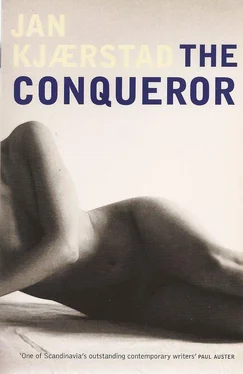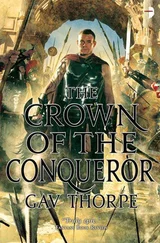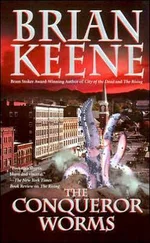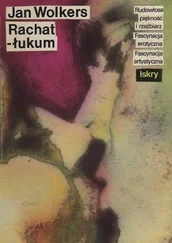Jonas Wergeland did have his disturbing sides, no two ways about it. We have now worked our way forward — please note: not back, but forward — to his tenth year, so I could, in other words, tell the story of the accident on the ski-jump slope or the trip in the rowing boat with Veronika or the illicit climb up the tower on Robber Hill — many people would find this last one particularly appealing. There is, however, no doubt in my mind that I must opt for Jonas’s friendship with Ørn and in that connection not, as you might expect, the breathtaking dive in Grorud Pond or their fateful spying on Ørn’s mother — not even the terrible forest fire. The right approach, and not just because of the link with the banknote bearing Ibsen’s portrait, is to focus on Ørn’s interest in the javelin thrower Egil Danielsen.
In Norwegian the word ‘ ørn ’ means ‘eagle’, so Jonas Wergeland’s best friend when he was a boy was, in fact, called Eagle, though he was no Red Indian. His full name was Ørn-Henrik, but he was known simply as Ørn — which is to say, Eagle — and hence, Little Eagle. And let it be said at the outset: no one could have been less suited to bear that imposing name, so redolent of history and Viking times. In Norway, you can get away with being called a bear — Bjørn — or even an elk — Elg. But an eagle — that’s a tough one. Sparrow would have been a better name for him. Not only was Ørn small for his age and scrawny for his age — he was also what can only be described as scruffy. And yet in certain situations, not unlike a lemming, he had an incongruously belligerent air about him that tended to have a provocative effect, especially on the bigger boys. To be called Eagle — and look the way Ørn did — was an insult, it was like asking to get beaten up. And beaten up he was.
As his nickname suggests, Ørn was doomed to play the Red Indian in all of the fierce battles fought by the children of Solhaug. Times without number he had hidden himself in some hopelessly obvious spot, with two crow feathers in his hair, only to receive a hard and ruthless knock on the back of the head with the butt of a revolver — absolute realism was the order of the day. For Little Eagle, it was an everyday occurrence to be thrown into patches of nettles or enormous anthills, or to be tied to trees and subjected to the cruellest torture, not least by Petter — later Sgt Petter — and his gang. On one occasion they even lit a fire at his feet — only the keen noses of a couple of vigilant parents averted a tragedy. Little Eagle didn’t do the scalping; he got scalped. Never did an eagle have its wings so well and truly clipped.
In the playground, too, Ørn was the communal punch-ball. At least once a week he would get into a fight, find himself — always undermost — in the middle of a ring of boys which rapidly degenerated into a cheering, chanting mob until the teacher on playground duty finally broke the enchanted circle, and the two boys in the middle were grabbed by the scruff of the neck and marched off to the headmaster’s office, as if Little Eagle, he, the sparrow was as much to blame as the firebrand by his side. There would be a little smile on Ørn’s face, of defiance or possibly satisfaction. Such a character was hard to fathom because, despite that maddening aggressive streak, he had a fawning, almost servile, air about him. This may have been why he liked being with Jonas; they spent every day together — until the accident, the major collision, occurred.
Why on earth did Jonas choose Ørn as his best friend? To say that Jonas wanted someone he could boss about, someone he could tell what to do, would surely be an oversimplification. Nor could it be compared to the phenomenon sometimes found among young girls, where a pretty girl will choose a plain friend, thus making her own good looks that much more apparent. Maybe — it’s a point worth considering — it all had to do with the chance of getting his hands on the treasures to be found in Eagle’s living room.
Thanks to a well-placed relative, Eagle owned every Donald Duck comic issued from 1948 onwards, in bound volumes at that. These magnificent albums were ranged on the bookcase in the living room alongside Aschehoug’s splendid encyclopaedia and took up nearly as much space. Later in life, Jonas would regard this arrangement as a natural upgrading of the worth of these comics. One which was well-deserved, since they were in many ways Jonas’s main work of reference, a source of information which came in handy in all sorts of situations, not least as an aid to the art of conversation. At the same time it gave Jonas an inkling that even an encyclopaedia is nothing but a pure fabrication. Not only that — if, for example, he looked up ‘The Flying Dutchman’ or ‘The Incan Empire’, he found the relevant entries dull and heavy-handed compared to the Uncle Scrooge stories concerning these same subjects.
Jonas would always remember those hours spent lying on the carpet of the Larsen family living room as special moments, hours when his eyes were drawn unresistingly from picture to picture through the wondrous world of the cartoon strips, most of all in the fantastic stories by the aforementioned Carl Barks. This heady pleasure was, moreover, often accompanied by a sound that enhanced the sense of having embarked on a fabulous journey into the realms of fantasy. Because it so happened that Ørn’s dad, when he had time off from his pots and pans at the Grand Hotel, would often sit in the living room, listening to one of his numerous Linguaphone records. Every winter Ørn’s dad — Three-Star Larsen — dreamed of setting out an extended tour of Europe in the summer holidays, though he never went any further than the southern tip of the Royal Wharf, never got beyond these courses, the patient repetition of crackling recorded phrases in Italian, Spanish or Greek. Mr Larsen could say ‘What time is it?’ and ‘Can you recommend a restaurant?’ in eight languages, though he never got the chance to put his skills into practice. Nonetheless, like the sound effects in a radio play, he helped to expand the space around the reading boys.
One day when they were ten years old, a spring day with a gentle rain washing away the last patches of snow outside, Ørn had done something unexpected. Or perhaps it wasn’t. Looking back on it, it occurred to Jonas that he had known it all along. That this was why he was friends with Eagle: that this was his reward, so to speak, for long and faithful service. Eagle had pulled a heavy book from the shelf, a volume that proved to be a fine, tooled leather album with gilded pages. A Bible, thought Jonas, a holy scripture. For is it not the case, Professor, that every person has a story, does something which shows that he is an Ankenaton, a unique human being; the sudden revelation, coming as a shock to everyone around them, that a person worships the sun, is a monotheist, when everyone else is praying to a whole host of gods — that he holds one idea above all others, one which he pursues faithfully and single-mindedly and for which he would willingly wipe out everything else?
Eagle opened the book, or album. It was not filled with photographs or scraps, football or automobile cards, as Jonas had expected, but with stamps: with transparent sheets of paper overlaying tiny, bright-hued miniatures. Jonas looked at Eagle, saw how all at once his face was glowing, as if illumined by a light — not to say a sun — shining out of the album itself, from beneath, like something out of a painting by Rembrandt. Jonas suddenly felt that he was being granted a glimpse of Eagle’s inner being, of a hidden majesty, a unifying vision.
Stamps. The English word is so flat and square, smacking of repression. Not so the Norwegian word: ‘ frimærke ’ — ‘free marks’, marks that make one free. This must be why nothing could daunt Ørn, even when nothing else was going right for him: when he got inkblots all over his handwriting jotter or scored an own goal at football. Jonas looked more closely at the stamps, understanding and yet not. Because the surprising thing was not that Eagle collected stamps, pored over them with tweezers and magnifying glass. Most boys have collected stamps at some time in their lives, for a week or so, or a couple of years. But Jonas realized that Eagle was the type who would go on collecting stamps all his life, and what was more: that there was a system, a concept of some sort, behind what he was seeing.
Читать дальше











